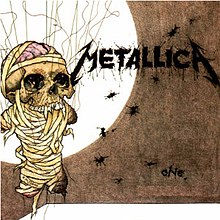Lyle Lovett and His Large Band |
 |
Released: January 23, 1989 Peak: 62 US, 10 CW, 88 CN Sales (in millions): 0.5 US Genre: alt-country/Americana |
Tracks: Song Title (Writers) [time] (date of single release, chart peaks) Click for codes to singles charts.
Songs written by Lyle Lovett unless noted otherwise. Total Running Time: 40:55 |
Rating: 3.960 out of 5.00 (average of 13 ratings)
Awards: (Click on award to learn more). |
About the Album: “While from the outset Lyle Lovett sounded like a hard artist to pigeonhole, his sponsors at Curb Records and MCA Records seemed determined to sell him as a country artist, though the blues and retro-jazz leanings of Lovett’s second album, Pontiac, suggested that strategy would only be practical for so long. With his third album, 1989’s Lyle Lovett and His Large Band, Lovett seemingly sidelined any career aspirations as a mainstream country act he or his handlers may have held.” MD “The album kicks off with a lively cover of Clifford Brown’s The Blues Walk, and the next five tunes all bear the smoky, late-night vibe of a low-key jazz joint, with top marks going to the hilariously off-kilter Here I Am, the witty scenario of potential infidelity What Do You Do/The Glory of Love, and the marvelously sly Good Intentions.” MD “The second half of the album is steeped in twang, but it was hardly more comforting for country radio programmers; I Married Her Just Because She Looks Like You is a ‘sweet on the outside and sick on the inside’ tale of romantic obsession, Nobody Knows Me bears a punchline that makes ‘God Will’ sound generous, and Lovett’s straight-faced cover of Stand By Your Man stubbornly refuses to either announce itself as a joke or suggest another interpretation.” MD “Wherever you choose to file it, Lyle Lovett and His Large Band made it clear that Lovett was only getting better with each album; the songs are uniformly well-crafted, Lovett’s vocals are full of subtle nuance, and his band is in brilliant form throughout (with special kudos to Lovett’s frequent vocal foil, Francine Reed). If you’re going to burn your bridges, you could hardly find a better way to do it than this.” MD |
Resources and Related Links:
Other Related DMDB Pages: First posted 3/24/2008; last updated 5/18/2022. |










